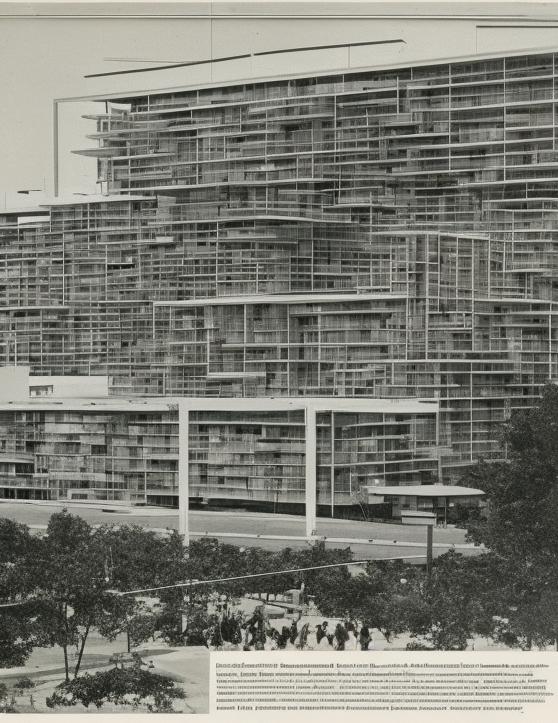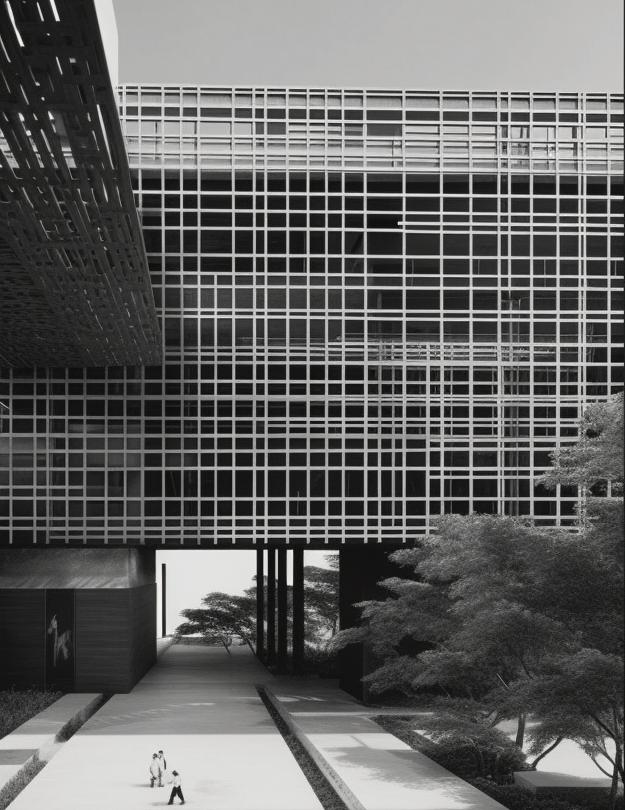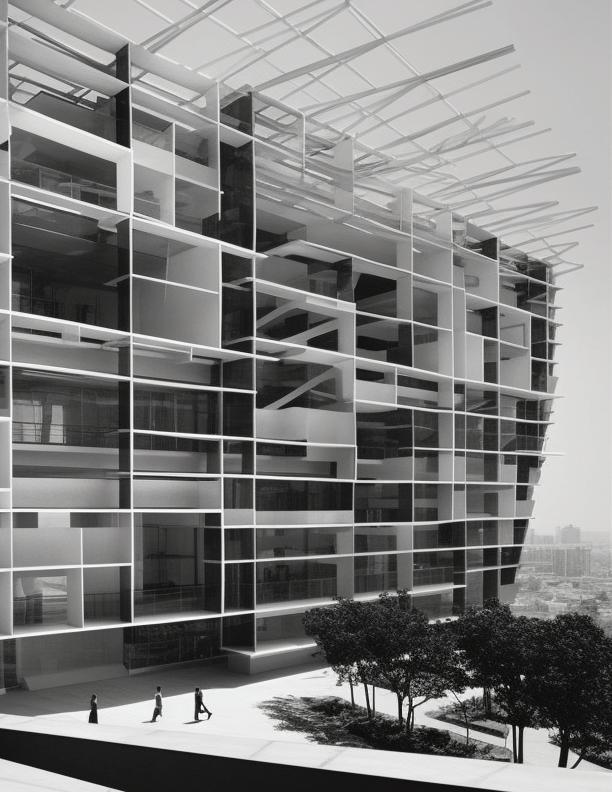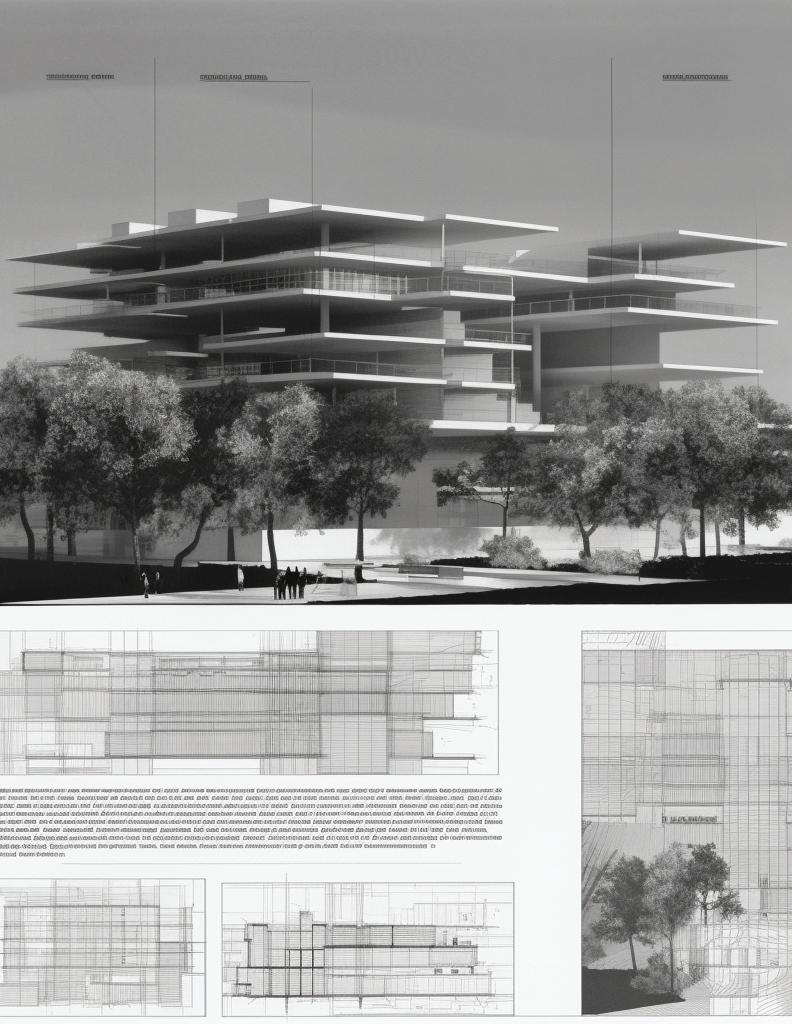Writing Architecture

Table of Contents
DISCIPLINARY WRITING MODULE

“Observation suggests that one of the reasons why architecture and urban settings of our time tend to make us feel like outsiders, in comparison with the forceful emotional engagement of natural historical settings, is their poverty in the field of peripherical vision.” (Pallasmaa 2016, 13.). I understand peripherical vision in the search of fulfilling a need for immensity (understood as a natural or urban horizon and a certain temporal perspective regarding historical buildings). What nature and historical settings give us is a powerful emotional feeling that ultimately outstands us. The human feels insignificant towards those timeless entities. Time which I will also call synonym for immensity or even infinity is marked on nature and anchored in historical buildings.
Yet, architecture gradually neglects and perhaps even denigrates the significance of this sensational impact the souls and bodies can experience. Juhani Pallasmaa notes: “Architecture domesticates limitless space and enables us to inhabit it, but it should likewise domesticate endless time and enable us to inhabit the continuum of time”. This journey could eventually be achieved in cities (turning away from any socio-political conflicts) where narrow streets accompanying historical buildings mingle but soon separate from newly skyscrapers, digging two urban bodies within the same city, two different atmospheres, and yet met by the same feeling of immensity (as of measurement and time value). Pallasmaa expresses: “I experience myself in the city, and the city exists through my embodied experience.”. It is questionable to know in which urban settings this awareness is still made possible. By referencing squares, cathedrals, dwells it seems that this feeling can only exist within centuries-old cities challenging new architecture in its lack of timeless materiality.
Considering Gotthard Booth’s (32.) “Architecture is essentially an extension of nature into man-made realm.”, at all construction scales, it is necessary to focus on how we construct and perceive architecture nowadays to keep fulfilling what architecture always meant to achieve: allowing individuals to perpetually experience the constructed continuum of the nature’s expenditure.
Sacred architecture can be perceived and understood through different lenses and does not belong to believers but to everyone. Sacred buildings were constructed after religious or spiritual beliefs but for the majority today they became accessible and open to everyone. It might be a place where religious believers find themselves, a place where they feel like they belong, and feel protected but for many non- believers it is oftentimes just a place of architectural grandiosity. Sacred places are meaningful but certainly not always from their sacredness.
Barrie cited Spiro Kostof: “Public architecture at best aspires to be just this: a setting for the ritual that makes of each user, for a brief moment, a larger person than he or she is in daily life, filling each one with the pride of belonging.” (73), I think it is important in this context to provide a definition for the word ritual as well as re-defining what sacred means: ritual is something that is done regularly and always in the same way, it is often known to be performed in a religious ceremony. A ritual does not always have a religious connotation. Sacred can be dedicated or set apart for the service of worship of a deity as well as being worthy of a religious veneration but also something unassailable, inviolable, and highly valued and important. Sacred does not always have a religious connotation. The term public architecture includes community centers, libraries, schools, courts, government buildings, and many others which can all be considered sacred for one and in which many people can perform rituals.
Sacred architecture does not diminish public architecture from being a place of sacredness and rituals, as much as sacred architecture is not reserved for religious people and can be a touristic attraction or a historical entity that non-believers and spiritual individuals take satisfaction to enter. The sense of belonging is subjective to everyone and every place.
From experiencing a place, one develops a sense of belonging. The immensity understood as a natural or urban horizon and a certain temporal perspective regarding historical buildings gives people a connection to their surroundings. When considering the man-made continuum of nature’s extension, humans can only experience the timeless association with architectural or non-architectural places.
In the Eyes of the Skin Pallasmaa expresses: “I experience myself in the city, and the city exists through my embodied experience.” The author describes how the city exists only within his acknowledgment and his sensory experience, once it is happening there is a certain weight to the city that is impacting us, and it has a strong growing presence within us. Yet when we recall all our senses, we then only experience the immensity of the spaces and architecture surrounding us. When Pallasmaa says: “One of the reasons why architecture and urban settings of our time tend to make us feel like outsiders […] is their poverty in the field of peripherical vision.” (2016, 13.). It is not only the peripherical vision that can allow one to begin bonding with a place, but all the senses also seem to have an extended or peripherical spectrum that directs us to the acknowledgement of the place, leading to immensity in various ways. The smell and the touch of centuries years old stonework open a whole imaginary field and lead us to the timeless realm of architecture.
Many places make people feel like they belong when experiencing their surroundings, in the Sacred Path and Place Barrie stated: “A meaningful place needs to process an environmental identity that gives its inhabitant a sense of belonging a connection.” (1996, 52.) But perhaps the author tends to particularly associate the sense of belonging to sacred architecture and seem to diminish public architecture taking away any of its meaning: “a definition of the sacred place, an architectural setting where “place plus meaning” are powerfully synthetized.” (52.) Many public architectures building such as libraries, schools, community centers and more can be experienced by individuals and have a deep meaning to them as they experience it. There is no need to be a religious or spiritual person to be able experience and develop a sense of belonging towards architectural places and natural environments.
As the sense of belonging is subjective to everyone and every place independently of our believes, one place, to be a natural setting or in an urban context does not need to be architecturally designed following certain standards to impact people’s connection to those, in a sense of belonging, as long as they seem timeless, but it does when it comes to how our embodied experience determines the way the space is utilized. A sense of belonging could be associated anywhere but we can only experience architecture through the seamless connection of our bodies and souls to the timeless man-made nature’s extension in the continuum of the field, associating it with a deep comprehension of human’s behaviors and needs, and ultimately with its durability.

A prospect view is one of the biophilic design patterns helping one to cope with stress, fatigue, boredom and mostly improve comfort as well as perceiving safety. What strikes me first is the resemblance of the world prospect and immensity as I reflected on previously, meaning a view that let people in awe facing an openness, freedom, and excitement. These are feelings related to the experience as the author presents it in 14 Patterns of Biophilic Design: “A space with a good Prospect condition feels open and freeing, yet imparts a sense of safety and control, particularly when alone or in unfamiliar environments.” (44, 2014.)
Surprisingly we can feel safe with a prospect view even in an unfamiliar environment which might be questionable to some extent, and I believe some people would not all feel the same way, maybe even feel in danger. The author writes: “Distant prospect (>100 feet, >30 meters) is preferred over shorter focal lengths (<20 feet, 6 meter) […] Good Prospect is extensive and information rich, with a savanna-like view.” As this is a feeling I am totally sharing since I experience it myself and feel the most in awe when presented to a prospect view, I would argue that not everyone is consciously aware of this biophilic pattern regarding the effects it has on them. When leading a survey in which about 301 people answered, one of the questions was: “What aspect makes you wonder the most in an urban environment?” immensity which was one of the answers options was picked 9 times representing 3%, when natural elements were 4th (45 picks) representing 15%.
In general, biophilic design patterns are seen as distinct elements within society, and we need to incorporate the understanding of these to utilize their benefits. Too many ignore some biophilic patterns and I think that we should raise awareness not only professionally but in the public realm, so one can understand its environnement.
Open-space floor plans can have effects on the psychological, physical, and effectiveness capabilities of the persons exposed to them. Acoustical ambient stressors should not be put aside, and behavior protocols should not be neglected when exploring potential open workplace features in a building. Open floor plans can be substantial for key factors in a workplace, such as easing communication and perpetuating a social and friendly environment that adds a sense of belonging, but they can quickly perturb individual productivity and workflow.
In the Post Occupancy of the Philip Merrill Environmental Center, we can read: “Acoustical conditions were the most negatively rated, primarily due to distraction from people talking and loss of speech privacy associated with the highly open environment.” (8, 2005) which can effectively reduce individual productivity. The graph (10, 2005) representing the average performing score of the building by categories only confirms the statement, with the two lowest scores being related to the acoustical quality and acoustic functionality. From the satisfaction with ambient conditions graph (12, 2005), we realize that only 25% of the space’s users were satisfied with speech privacy which is associated with acoustic functionality. Whether it is people talking nearby a workstation or the colleagues talking on the phone, acoustic disturbance can lead to frustration, lack of concentration, and general distraction which is the opposite of what one looks for in a work environment. It has been proven in the impact on perceived work effectiveness graph (13, 2005), with 30% of the occupants pointing to acoustical conditions as an interference to their work.
Considering the acoustical ambient stressor should take precedence over the decisions made for the design of open workplace layouts. Meeting the CBE database is not enough, and all ambient stressors deserve to be considered just as much as the other sustainable factors included in the design and realization of workplace projects.
Acoustics ambient stressors should not be independently considered from the prospect views in an open workplace. Prospect views have consequential impacts on people’s psychological effects as well as their productivity capabilities. It allows the users working in the building to have a visual connection to natural elements such as large fields, hills or mountains, giving them a peace of mind that is crucial to daily work breaks. It is key to carry on with effectiveness.
It is primordial to define a prospect view to differ from a view within the office. The 14 Patterns of Biophilic Design defines a prospect view to be: “A space with a good Prospect condition feels open and freeing, yet imparts a sense of safety and control, particularly when alone or in unfamiliar environments […] distant prospect over 30meters is preferred over shorter focal lengths 6meters because it provides a greater sense of awareness and comfort (Herzog & Bryce, 2007), reducing one’s stress responses, particularly when alone or in unfamiliar environments (Petherick, 2000).” (44, 2014). The difference between a view within the office and a prospect view is that a prospect view is ultimately outside and extended.
In the Post Occupancy of the Philip Merrill Environmental Center, we realize that most of all the employees have access to daylight and prospect views on the outside, but it does not include either considerate how load the open workplace can be. Yet they emphasize the point of not having doors which can become less attractive considering the constant flow of people within the space: “Their workplaces do not have doors, enabling passersby to look through the space to see the surrounding landscape from all points in the building. The majority of the staff […] provide equitable access to daylight and views.” (3, 2005).
A proposal of innovation could be to create multiple ephemeral and modulable spaces within the existing space. It would be made possible by being attached to the ceiling of the open workplaces and would be automatized to go up and down depending on the need of each within the office. It would be glass boxes of the size of at least one person standing plus a desk to allow a sense of seclusion, and yet being able to see what is happening around them. In that sense it would allow employees to still benefit from an outdoor prospect view as well as being aware of their surroundings within the larger space, and not being disrupted by acoustic ambient stressors.
Innovations can change the course of how open workplaces work, enabling access to views without emphasizing ambient stressors but rather eliminate them. If open workplaces are often modular emphasizing interchangeable spaces, it is also often becoming difficult to concentrate properly as an employee because of multiple variables but mainly ambient stressors. We must come up with innovative ways to address this issue and improve the psychological effects open workplaces can have on users.

As architects it is essential to pursue values that motivate and inspire you in your design work throughout your carrier. As we develop through time professionally, we will tend to focus our efforts into one specific value that reflects our work. Professional website should all include a brief introduction that speaks to this specific value in order to better inform the visitors (architects and clients) to enable them to make decisions as they continue their journey on the page. Francis Kere Architecture and Reddymade both incorporated a short summary of their work and value on the first page of the website; Kere’s mainly focus on the respect of the surrounding environment working with local resources and a strong social commitment, as Reddy is committed to human well being and experience.
On the home page of their respective websites Kere and Reddy both chose to indicate their motto but Kere’s made an emphasis on it along the main page when Reddy showcases it as a strong singular statement on the first slide of her website, dedicating the rest of her page for her projects. As a result, Reddy’s website is easier to navigate and more accessible to the users as they can immediately click on a selection of projects before diving into the menu.
As we dive into their websites categories, we notice disparities, especially on the “about us” and the news/archives tabs. Kere’s archives are amazingly arranged by sub-tabs whereas Reddy’s news seem to be a list, less pleasing. On the other side, Reddy’s “about us” page is very friendly as it showcases the staff’s portraits, and Kere makes it harder to navigate, and with no photos of his employees.
Both Kere’s and Reddy’s websites incorporate elements that all mingled together could make an ideal architectural website, as showcasing values, projects, expertise and archives. It is however important to keep it easy to navigate and comprehend.
In the context of architectural discipline and profession, what is the appropriate usage of the term “architect”, and is it solely determined by formal qualifications established by governing boards (i.e, licensure), or can factors such as experience and other skills and qualifications also be considered?
“Professionalism developed in England during the nineteenth century as a mean of affording the professional man security of employment in a free market economy.”
- Anastasia H. CortesThe perception of the term ‘architect’ can be perceived differently by different groups and can be viewed cynically. From licensed architects to non-professionals and clients, the noun is often misunderstood and misinterpreted. In general, individuals understand that in order to become an architect they have to go through licensure. However, architecture is broader and being an architect does not necessarily require licensure. Experience, diverse qualifications, and an architectural background are what make one a true ‘architect’.
Architecture needs to be more interdisciplinary in the context of the built environment; it can be made possible by reinventing and broadening the architectural education and experience such as going through “apprenticeship” and “mentorship” along with relatable mandatory classes (like Philosophy, Psychology, Sociology, DATA, Environment, Land Geography, Law, Construction Management). Becoming an architect already differs from country to country, in Finland students are encouraged to work part-time after their first year. Then their time at school is no longer imposed, better acclimatizing students and giving them more freedom to learn architecture beyond school. The term of architect in Finland is less restricted, as they do not have federal regulations governing its use.
There are many examples of architects that never received licensure. For example, renown individuals such as Lebbeus Woods was called an architect although he was never licensed. His artistic qualifications combined with a degree in architecture and his experience with well-known design firms was enough for him and others to be called architects. A profession is an advanced training, and the discipline is knowledge acquired through an academic career. While both are interdependent, the profession should not require registration nor licensure to enable us to practice and be called an ‘architect’.
References
Pallasmaa, Juhani. 2016. The Eyes of the Skin. 3rd ed. New York, NY: John Wiley & Sons.
Barries, Thomas. 1996. Spiritual Path, Sacred Place, Myth, Ritual, and meaning in Architecture. 1st ed. Boston, MA: Shambhala Publication, inc.
Browning, W.D., Ryan, C.O., Clancy, J.O. 2014. 14 Patterns of Biophilic Design. New York, NYC: Terrapin Bright Green llc.
Heerwagen, J., Zagreus, Leah. 2005. The human factors of sustainable building design: post occupancy evaluation of the Philip Merrill Environmental Center. California, Berkeley: Peer reviewed.
Kere, F. 2018. Kere Architecture. https://www.kerearchitecture.com/.
Reddy, S. https://reddymade.design/news/.
Ankitha Gattupalli. "The Noun Crisis: Defining an Architect " 21 Jan 2023. ArchDaily.
Baierle, Gabriela. December 19, 2020. An investigation on the practical value of architects. DCMNT.
Forum. June 28, 2018. Was Lebbeus Woods an 'Architect'? (According to NCARB and His State Board). Archinect.
Boyer, Elizabeth. December 16, 2015. Lebbeus Woods Architect: Biography, Building, Project and Facts. Famous Architects.
All images in this dossier have been generated by artificial intelligence, Midjourney.
